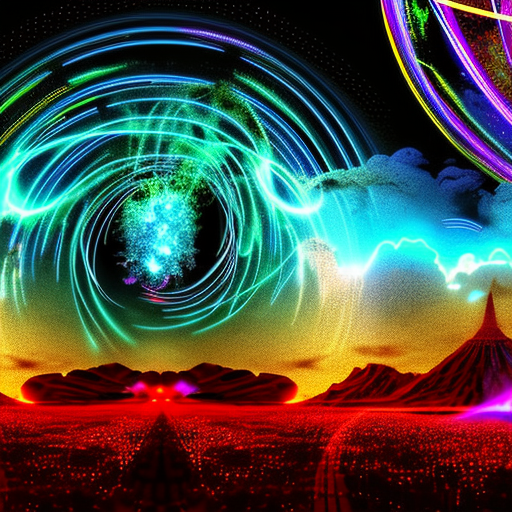Summary:
In “Physics of the Impossible,” renowned physicist Michio Kaku explores the fascinating world of science fiction and separates the plausible from the impossible. Through a captivating blend of theoretical physics and pop culture references, Kaku examines the potential for realizing fantastical concepts such as time travel, teleportation, and even immortality. While some ideas may seem far-fetched, Kaku’s expertise and engaging writing style make this book an enlightening journey into the realm of possibilities.
Exploring the Boundaries of Science Fiction:
Kaku begins by categorizing three types of impossibilities: Class I, which are currently impossible but do not violate the known laws of physics; Class II, which may be possible within the next century or two; and Class III, which violate the laws of physics as we currently understand them. He then delves into each category, discussing the scientific principles behind various science fiction concepts and evaluating their feasibility.
One of the most intriguing ideas explored is time travel. Kaku explains the different types of time travel, from traveling to the future through time dilation to the possibility of traversing the past using wormholes. While time travel to the past remains in the realm of Class III impossibilities, Kaku presents a compelling case for the potential of time travel to the future, highlighting the effects of relativity and the concept of cosmic strings.
From Teleportation to Immortality:
Another captivating topic covered in the book is teleportation. Kaku examines the concept of quantum teleportation, which involves transferring the quantum state of one particle to another. While teleporting complex objects or humans is currently beyond our reach, Kaku explores the progress made in teleporting individual atoms and the potential for future advancements.
The quest for immortality is also explored, with Kaku discussing the possibility of uploading human consciousness into computers and achieving digital immortality. He delves into the concept of mind uploading and the challenges associated with preserving the complexity of the human brain. While achieving true immortality remains a Class III impossibility, Kaku presents the advancements in regenerative medicine and the potential for extending human lifespan.
Exploring the Cosmos and Beyond:
Kaku takes readers on a journey through the cosmos, discussing the possibility of extraterrestrial life and the potential for communication with advanced civilizations. He explores the Fermi paradox, which questions why we haven’t encountered intelligent alien life despite the vastness of the universe. Kaku presents various explanations for the paradox, including the possibility of advanced civilizations transcending physical existence.
The book also delves into the concept of parallel universes and the multiverse theory. Kaku explains the different levels of parallel universes, from Level I, which involves multiple copies of our universe, to Level III, which encompasses an infinite number of universes with different physical laws. While the existence of parallel universes remains speculative, Kaku presents the scientific theories and evidence that support these ideas.
Key Takeaways:
- Physics of the Impossible explores the feasibility of various science fiction concepts, categorizing them into three classes of impossibilities.
- Kaku discusses the potential for time travel, teleportation, immortality, extraterrestrial life, and parallel universes.
- While some ideas may currently be impossible, Kaku presents the scientific principles and advancements that could make them a reality in the future.
“The only way to discover the limits of the possible is to go beyond them into the impossible.” – Arthur C. Clarke
In “Physics of the Impossible,” Michio Kaku combines his deep knowledge of theoretical physics with his passion for science fiction to explore the boundaries of what is currently considered possible. Through captivating explanations and thought-provoking discussions, Kaku invites readers to imagine a future where the impossible becomes possible. Whether you’re a science enthusiast or a fan of science fiction, this book will leave you inspired and questioning the limits of our universe.












